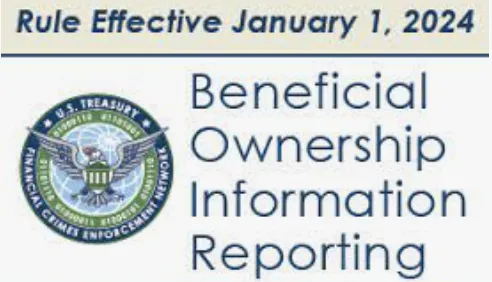The only thing that gives me pleasure is to see my dividend coming in.” –John D. Rockefeller.
Dividends are a form of reward distributed to shareholders in return for their investment in a company’s equity. Dividends are typically derived from a company’s net profits. Profits can be retained within the company for ongoing and future business activities, but a portion can be distributed to shareholders as a dividend.
Companies may still make dividend payments even when they don’t make sufficient profits to maintain their established track record of distributions.
Although some businesses may distribute dividends semi-annually, most companies distribute dividends to shareholders quarterly. Payments may be received in cash or as a reinvestment in company stock. This guide provides a detailed guide on how to issue shareholder dividends.
Key Takeaways
- A corporation may regularly pay dividends to its shareholders; the amount paid depends on how many shares each shareholder owns. They may be paid as cash, shares of stock, or property.
- Dividends can also be classified as common or preferred stock dividends; preferred stockholders receive their dividends in full first before any common stock dividends are distributed.
- Double taxation occurs when a US company distributes dividends to a foreign shareholder. The tax depends on the tax treaty between the US and the home country.
What are dividends?
Dividends are a fraction of the company’s earnings distributed to shareholders, depending on the number of shares they own. Shareholders anticipate that the companies they invest in will return some of the profits to them, but not all companies pay dividends.
Why is paying dividends to shareholders important?
Dividends allow companies to share a portion of their profits with shareholders as a return on their investment. Dividend payments demonstrate a company’s commitment to shareholder value and confidence in its ability to generate profits in the future.
What are the benefits of issuing dividends?
The decision to pay dividends should be based on the company’s financial situation, growth prospects, and strategic objectives. Issuing dividends to shareholders can offer several benefits to a company and its shareholders. Some of these benefits include:
1. Rewarding Shareholders: Dividends are a way to reward shareholders for their investment in the company. It provides them with a tangible return on their investment and can attract investors who seek income from their investments.
2. Attracting Investors: Companies that regularly pay dividends may be more attractive to income-focused investors, such as retirees or those looking for stable income streams. This can help increase demand for the company’s stock.
3. Demonstrating Financial Health: Consistently paying dividends can signify financial stability and confidence in the company’s prospects. It may reassure investors about the company’s financial health.
4. Stock Price Support: Dividend payments can sometimes support a company’s stock price, as investors may be more inclined to hold onto a company’s shares that pay dividends, reducing volatility.
5. Tax Benefits: In some cases, dividend income may be taxed lower than other forms of income, such as capital gains. This can provide tax advantages to shareholders.
6. Alignment of Interests: Dividends align the interests of shareholders and management. When shareholders receive dividends, they see a direct benefit from the company’s profitability, which can encourage responsible corporate governance.
7. Capital Allocation: Issuing dividends forces companies to consider how to allocate their capital carefully. It encourages management to evaluate investment opportunities and only retain earnings when profitable growth prospects exist.
8. Investor Loyalty: Regular dividend payments can help build loyalty among long-term shareholders, reducing the likelihood of selling shares during market downturns.
Some significantly younger or high-growth companies may reinvest profits into the business for expansion rather than pay dividends. Dividend payments should be sustainable and not jeopardize the company’s financial stability. When deciding on dividend policies, consulting with financial advisors and considering the company’s unique circumstances is essential.
What are the tax implications associated with issuing shareholder dividends?
The tax implications associated with issuing shareholder dividends can vary depending on the company’s financial situation and taxation in the state of registration. Here are some key tax considerations related to shareholder dividends:
- Taxation at the Shareholder Level: Dividends may also be subject to tax treaties if the shareholder is a non-US person.
- Qualified dividends are subject to preferential tax rates for individual shareholders. The tax rates on qualified dividends were generally lower compared to ordinary income tax rates, ranging from 0% to 20%, depending on the shareholder’s taxable income.
- Non-qualified dividends are usually subject to taxation at the shareholder’s standard income tax rates, which may exceed those applicable to qualified dividends.
- Reporting Dividends: Shareholders must report dividend income on their individual income tax returns. The company issuing the dividends reports the dividends on Form 1099-DIV or 1042/1042S to shareholders, which reports the dividend income received.
- Dividend Withholding: In some cases, companies may be required to withhold a portion of the dividend payment to cover potential taxes owed by non-resident shareholders.
- State Taxes: Some states may tax dividend income. State tax treatment of dividends may also differ from federal tax treatment.
To navigate the tax implications of issuing shareholder dividends, we can provide guidance tailored to your situation, help with compliance, and ensure you make informed decisions regarding dividend distributions.
Are there any tax savings or financial benefits to issuing dividends?
There can be potential tax savings or financial benefits for a corporation when issuing dividends to shareholders. However, it depends on various factors, including the company’s financial situation, the tax laws in its jurisdiction, and its shareholders’ tax circumstances. Here are some considerations:
1. Reduced Corporate Tax Liability: Corporations may be eligible for deductions or credits related to dividend payments in some tax jurisdictions. These deductions or credits can significantly reduce the corporate income tax burden. However, the availability of these benefits varies greatly depending on the tax laws in place in a given jurisdiction.
2. Efficient Capital Allocation: Paying dividends can be an efficient way to distribute excess cash to shareholders. This can be especially advantageous when the company needs profitable investment opportunities or projects to allocate the retained earnings. Distributing dividends allows shareholders to decide how to reinvest or use the funds, potentially in a more tax-efficient manner.
3. Attracting Investors: Regularly paying dividends can make a corporation’s stock more attractive to income-focused investors. This increased demand for the company’s shares can lead to higher stock prices and better access to capital markets.
4. Aligning Interests: Dividend payments can align the interests of shareholders and management. When shareholders receive dividends, they directly benefit from the company’s profitability, which can encourage responsible corporate governance and focus on generating profits.
5. Reducing Cash Hoarding: Some companies may accumulate excess cash on their balance sheets, which can be less efficient than distributing it to shareholders. Paying dividends helps prevent excessive cash hoarding and encourages efficient capital management.
It’s important to note that the decision to issue dividends should not be taken lightly, and it should consider various factors, including the company’s financial health, growth prospects, and shareholder expectations. Additionally, the tax implications for individual shareholders should be considered, as dividend income is typically taxable at the individual level.
Cleer can provide guidance on the potential tax savings and financial implications of issuing dividends and help determine the best dividend policy for the company’s circumstances.
What are the drawbacks of issuing dividends?
While issuing shareholder dividends can have benefits, there are also potential drawbacks and considerations that corporations should take into account:
1. Reduced Retained Earnings: Distributing dividends reduces the amount of money retained within the company. This can limit the corporation’s ability to reinvest in growth opportunities, such as research and development, capital expenditures, or expansion projects.
2. Tax Implications for Shareholders: Shareholders receiving dividends may be subject to personal income tax on the dividend income, depending on their tax situations and the tax laws in their jurisdiction. This leads to double taxation. The corporation pays taxes on the same income twice (double taxation), once at the entity and shareholder levels.
3. Dividend Expectations: Once a company begins paying dividends, shareholders may anticipate regular payments. Failure to meet these expectations can lead to disappointment and lower stock prices.
4. Cash Flow Considerations: Paying dividends requires a consistent and reliable source of cash flow. If the company’s cash flow needs to be consistent or sufficient to support dividend payments, it may need to rely on debt or other sources of financing to meet its dividend obligations.
5. Shareholder Equity and Debt Ratios: Consistently paying dividends can reduce the company’s shareholder equity and affect certain financial ratios, potentially making it more challenging to obtain financing or meet debt covenants.
6. Potential for Stock Price Decline: On the ex-dividend date (the day after the dividend payment), stock prices may fall by an amount roughly equal to the dividend payment. This can impact shareholders who rely on stock appreciation.
7. Share Buybacks vs. Dividends: Companies may buy back shares instead of paying dividends. Share buybacks involve repurchasing shares from shareholders, which can have different financial and tax implications.
8. Regulatory and Legal Requirements: Some jurisdictions have specific rules and regulations regarding the payment of dividends, including restrictions on dividend payments if a company’s financial condition is not strong enough to support them.
9. Economic Downturns: In challenging economic times or during financial crises, maintaining dividend payments may strain a company’s financial resources. Corporations may need to reduce or suspend dividends during such periods to conserve cash.
10. Opportunity Cost: Money paid out as dividends is not available for other potential investments or acquisitions that could contribute to long-term growth and shareholder value.
It’s important to strike a balance between providing returns to shareholders and retaining earnings for future growth and operational needs.
What are the penalties for failure to file the applicable dividend forms?
The penalties for non-filing vary depending on the specific form involved:
- Form 1099-DIV: Noncompliance with Form 1099-DIV, which reports dividends and distributions received by individuals, may result in penalties ranging from $50 to $280 for each form.
- Form 1042-S: If Form 1042-S is not filed as required, the IRS may impose a $30 penalty per form, up to $250,000 per year. This form reports dividends and other payments made to foreign persons to meet tax withholding requirements.
What documents are required to file Form 1099-DIV or Form 1042-S?
Certain essential documents are required to complete Form 1099-DIV or Form 1042-S accurately.
- W-9 for Form 1099-DIV: When preparing Form 1099-DIV to report dividend income paid to US individuals or entities, you may need to obtain a completed W-9 form from each recipient. The information on the W-9, including the recipient’s taxpayer identification number (TIN) or Social Security number (SSN), is used to report income on Form 1099-DIV correctly.
- W-8BEN for Form 1042-S: If you prepare Form 1042-S to report payments made to non-US persons, you may need to obtain a completed Form W-8BEN from each recipient. Form W-8BEN is used to certify the shareholder’s foreign status and claim any applicable tax treaty benefits, which may influence the amount of withholding tax required on payments reported on Form 1042-S.
- Shareholders Dividend Distribution Agreement. The agreement specifies dividend distribution terms to ensure clarity and legal compliance.
Filing Forms with the Tax Team: Collaborating closely with the tax team is imperative to ensure the timely and accurate filing of the required forms. Specifically:
- Form 1099-DIV (for US persons): This form must be filed before January 31st of each year to report dividend income paid to US persons.
- Form 1042-S (for non-US persons): File Form 1042-S before March 15th to report payments made to non-US persons.
Are there deductions that can be taken or tax savings when issuing shareholder dividends?
There are no specific tax deductions or direct tax savings for corporations when they issue dividends to shareholders. Dividend payments are typically not tax-deductible expenses for the corporation. Instead, corporations often pay taxes on their income before distributing dividends to shareholders, and shareholders may also be subject to taxes on their dividend income.
However, some considerations can impact the overall tax treatment of dividends:
- Dividend Exclusions: Some jurisdictions may provide specific exclusions or exemptions from taxation for dividend income in certain situations. These can vary widely by jurisdiction and may depend on factors such as the type of dividend (e.g., qualified dividends) or the corporation’s ownership structure.
- Stock Buybacks: Some corporations choose to return value to shareholders through stock buybacks (repurchasing shares) instead of paying dividends. Depending on the jurisdiction and the tax laws in place, stock buybacks can have different tax implications for both the corporation and shareholders.
What are common errors made when issuing shareholder dividends?
Issuing dividends can be tricky, leading to common errors that may have significant implications for corporations and shareholders.
- Inadequate Record-keeping: Failure to maintain proper records and documentation of dividend declarations and payments can lead to tax compliance issues and difficulties in demonstrating the legality of dividend distributions.
- Ignoring Tax Implications: Corporations should consider the tax implications of dividend payments for the company and its shareholders. Neglecting these considerations can lead to inefficiencies and additional tax liability.
- Failure to Obtain Relevant Tax Forms: Corporations must collect W-9 or W-8BEN from shareholders. These forms provide crucial tax information for accurate reporting and IRS compliance. Tax reporting may be incomplete or inaccurate without these forms, resulting in penalties.
- Missing Filing Deadline: There can be penalties and non-compliance for missing filing deadlines, usually by January 31st of the year after the prior tax year. Corporations should prioritize tax reporting and file all forms on time to avoid penalties and ensure compliance.
- Non-remittance of Withholding Tax: Corporations must withhold taxes from non-Us persons’ dividends and send them to the IRS. Failure to remit the required withholding tax can result in penalties and legal repercussions.
Additional errors include:
- Not collecting Form W-9 or W-8 BEN from shareholders.
- Not filing Form 1099-DIV or 1042-S, or not filing by the deadline—usually by January 31st of the following year for the previous tax year.
- Not remitting the withholding tax to the IRS.
Are there any tips, ticks, or hacks to ensure compliance with relation to dividend issuance?
Here are some suggestions for ensuring compliance with tax laws and filing requirements related to dividend issuance.
- To avoid tax and regulatory issues. maintain detailed and accurate records, such as dividend declarations, payment dates, distributed amounts, and shareholder information.
- Establish procedures for obtaining and verifying the accuracy of tax forms such as W9 and W-8BEN from shareholders.
- Withhold the appropriate tax from dividends paid to non-US persons.
- Promptly remit the withholding tax to the IRS and keep the proof of payment for possible IRS audits.
- File Form 1099-DIV or Form 1042-S to avoid penalties.
Can Cleer Tax help me with the required tax filings concerning my dividend issuance?
Yes! Our tax team at Cleer Tax can assist you with your tax return, which includes Forms 1099 and 1042-S, as applicable. Our bookkeeping team can help you organize your accounting books to guide you with your estimated tax due for your 2023 tax return and dividends.
Cleer provides Corporate Income Tax Packages encompassing federal and state income tax filings for a hassle-free experience. We also offer all-inclusive bookkeeping packages, which include your monthly statements plus your federal and state tax returns. If you need help getting up to date on your books, we also offer support for companies that have fallen behind on their bookkeeping with our bookkeeping catch-up package.
For additional inquiries, contact us or schedule a consultation with one of our experienced tax professionals.






